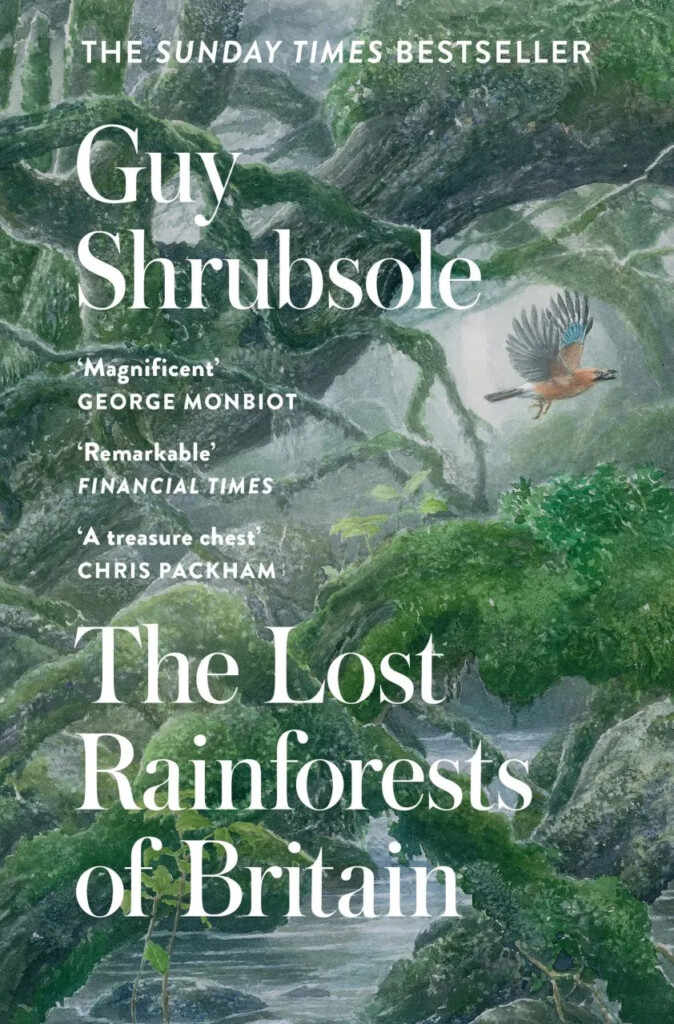Struck by the ethereal quality of Wistman’s Wood, Shrubsole’s quest for Britain’s lost rainforests begins with the haunting beauty of the western Sessile Oak woods near his Devon home. It sets him off on a personal journey from a standing start, as he discovers the world of botany, particularly the mosses, lichens and epiphytic ferns which paint tree trunks shades of green and hang from the branches of old oak trees. There are many insights along the way – an appreciation that the lack of animals in woodland is as unnatural as overgrazing, for example, and in consideration of forestry the disaster that follows when economists triumph over ecologists. Perhaps the most insidious threat to precious habitats, he suggests, ‘is our culture’s plant blindness’.
As a campaigner who has previously written about the scandals surrounding landownership, he has looked for a cause and found it in the wooded places he frames as ‘lost rainforests’. His infectious enthusiasm carries the reader with him on his journeys to explore the remnants of temperate rainforest growing in the west of Britain, on which he keeps a sharp focus. The personal, which includes meetings and through literature with those dedicated to the wet woods of the west, is one of a number of threads with which he engages the reader. History, literature and the woods themselves provide substance, alongside mythology and imagination; he is also a polemicist appalled at past losses and hopeful of new beginnings, the revival of an appreciation of our own rainforests.
Not all readers will enjoy reading so much about the author. I found it engaging and genuine, and, in bringing the subject matter to a largely new audience, it is appropriate that the author’s passion should be in the foreground. One chapter begins with Shrubsole visiting a much admired Tolkien illustrator and fantasy artist. They walk through wood pasture of gnarled and characterful trees, and discuss what draws them to woods. The scene then shifts to reflections on Tolkien and his love of trees. This leads into an interesting piece of research into the Dartington Estate and its role in acquiring and destroying old oak woods, which were cheap to buy, to be replaced with ‘profitable’ forestry. This is followed by a damning review of commercial forestry and of the role of the Forestry Commission in particular.
Shrubsole is a skilful champion for his central thesis, that Britain has its own rainforests, every bit as important as tropical ones. He believes that the high rainfall areas of the west of Britain, which comprise a fifth of the landmass, should naturally be rainforest, and we should do what we can to restore temperate rainforest wherever possible. It is a flawed proposition but an attractive one. It reminds me somewhat of George Monbiot’s Feral. In fact the two met while they were both living in Machynlleth and Monbiot was researching his book, and they became friends. Shrubsole subsequently worked on the Rewilding Britain campaign.
Like Feral, Lost Rainforests is in part a manifesto. I hope that it will stimulate debate and broaden the cause of nature. Shrubsole’s headline-grabbing proposition that lost rainforests could be revived and restored across 20% of Britain conforms to the journalistic tradition that a half-truth, like a half-brick, is preferable because it carries farther. Yet sometimes the blinkers give way to a broader appreciation of nature which tempers his rainforest rhetoric. ‘When seeking to restore rainforest, our aim mustn’t be simply to create wall-to-wall closed-canopy woodland. Instead, our ambition should be to generate a rich mosaic of habitats, combining rainforest with wood pasture, wetlands and wildflower meadows… We need disturbance in our rainforests for them to be healthy, dynamic ecosystems.’
Shrubsole’s advocacy requires certainty, but his rainforest concept is hard to pin down. He acknowledges that ancient landscapes were likely to have been more open than the dense, primeval forest of popular imagination, but sticks with his chosen simplification, repeating phrases such as ‘temperate rainforests… once carpeted Wales’. There are many details which reveal limits to his knowledge and research. His discovery of Royal Fern, ‘the crowning glory of Britain’s rainforest ferns’, had me worrying for the future of this fern of open bogs and riversides. As a fan of nominative determinism, I would hope that he might next turn his attentions to the marvels of scrub, on the way to celebrating the rich mosaic of habitats which he acknowledges. But however amorphous his subject, Shrubsole has written a stimulating book, and shown himself to be a powerful advocate for nature. Time will tell how far he gets with his stated ambition ‘to find Britain’s lost rainforests and bring them back’.


